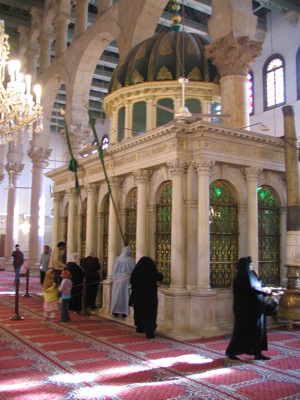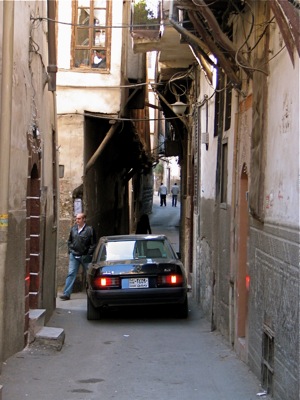
Damascus
Here’s a short video of our trip to Damascus.
Before exploring the souk and the old city of Damascus I thought I’d include one of the most familiar sights of all our time in Syria – the Syrian breakfast which was completely unchanged in every hotel and guesthouse we stayed. Was it enshrined in law that all guests must be served boiled eggs, olives, white Syrian cheese, lebneh (a delicious cheesy yogurt) and arabic bread? All washed down with sweet tea.

Damascus lays claim to the title of the oldest continuously inhabited city in the world dating from 3000BC, preceding the Egyptians who actually captured it in 1500BC. Other conquerers included King David of Israel, assorted Persians, Alexander the Great and then the Romans. Through all this history the centre of the city has remained the same. In 3000BC the locals built a temple to their god Hadad, then it was changed to a Roman temple to Zeus and then a church. Since 700 it has been one of the oldest and holiest sites in Islam – the Umayyed mosque. Although it was built in about 700AD much of it has been rebuilt over the years, but it certainly is one of the most impressive buildings I’ve ever visited.
This picture taken from our hotel room manages to capure a rare view of the mosque showing off all three minarets. The middle one is called the Minaret of Jesus, the tallest of the three and so named because local tradition says this is where Jesus will appear on Earth on judgement day.

In the central courtyard is (from right) The Dome of the Treasury which is where the city’s funds were once stored. In the centre is the ablutions fountain, found in all mosques, and at far left is the Dome of the Clocks – all mosques have a number of clocks so that prayer times can be seen easily.

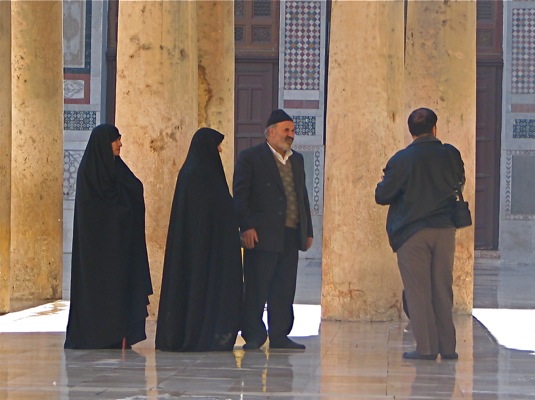
All visitors to mosques must be have their arms and legs covered. This wasn’t a problem during the middle of winter, however it seems foreign women must also wear an ‘Obi wan Kenobi’ outfit – this one modelled by Jackie.
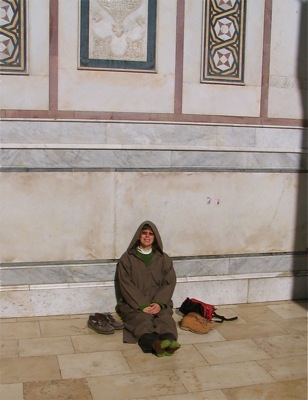
Inside the prayer hall, looking rather out of place is the shrine to John the Baptist. Back when the building was a church a casket was dug up containing, it was said, John’s head. It’s now here in its own shrine. It must be said there are a number of his heads enshrined in various parts of the Middle East. In another part of the mosque is another shrine – this one is that of Hussein, Muhamed’s grandson and one of the holiest saints to Shiite Muslims. It is always very busy especially with black clad women from Iran.
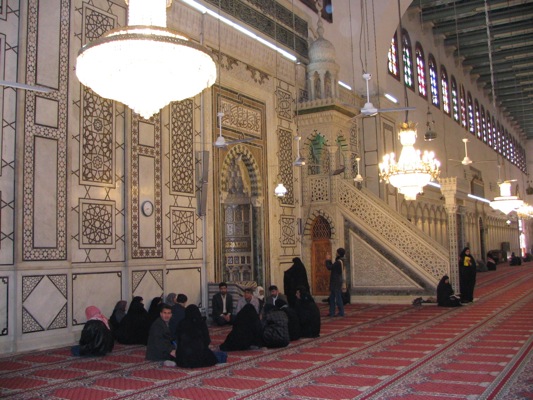
Outside the mosque, almost clinging to its walls is the old city. This is a cramped network of lanes. Many of the houses span these lanes forming a dark tunnel while others just hang precariously over. Of course it doesn’t stop cars from squeezing down the tightest alleyways.
Sharing the tight spaces of the old city are the famous souks – these are the markets and shops where you can buy almost anything. Below are shops selling decorations which work just as well for Islamic events such as Eid, Christmas for Christians or New Year for everyone. Damascus is famous for textiles so there are plenty of shops selling gaudy cloth. And of course there are tourist shops selling carpets and ‘antique’ curios and souvenirs.


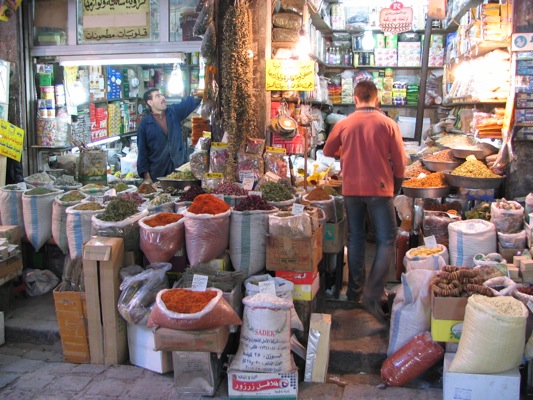

So-called ‘Straight street’ is one of the oldest streets in Damascus and even gets a mention in the Bible. When we were there it was being renovated. The street is lined with tiny cell-like shops and covered with a tin roof which helps keep the sun off in the summer and the rain in the winter.
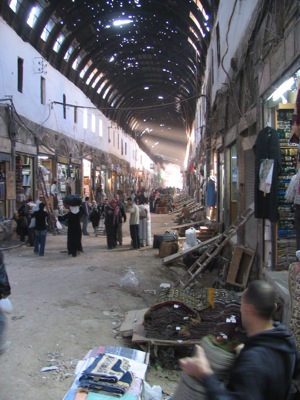
Outside the old city there are still a number of buildings old and new. This is a mosque from the Ottoman period built in the 18th century and in front of it sheep skins for sale in the aftermath of Eid ul adha. We did actually pick up a nice one here for just over $6.
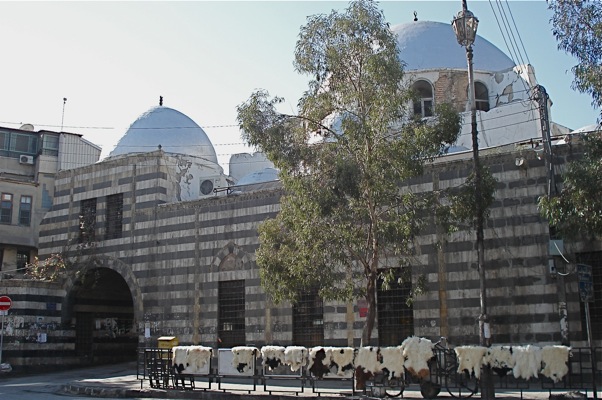
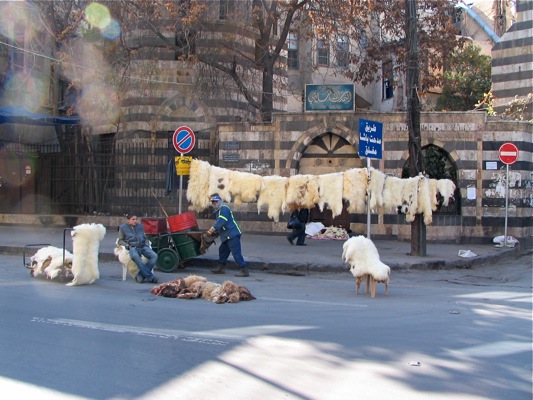
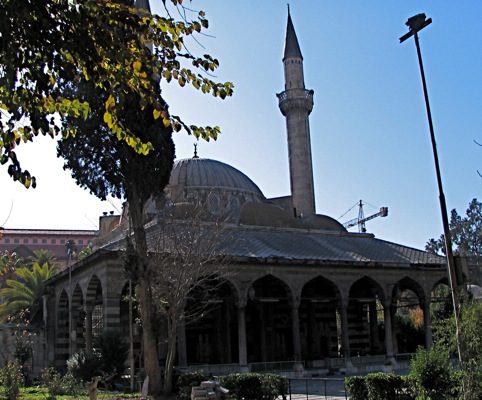
You can no longer get a train to take you on the Haj to Mecca. The tracks are all torn up but the train station remains. Here is the view from one of its stained glass windows.
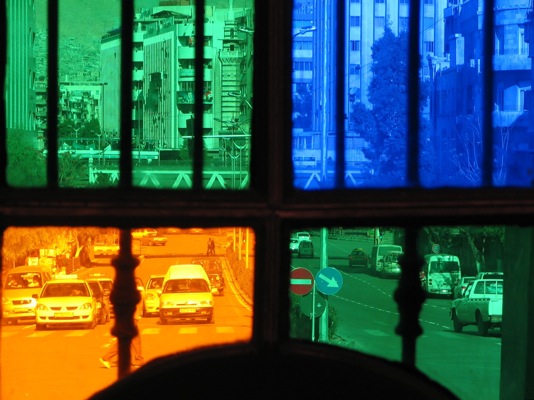
Another great meal! the salad is fattoush – pretty much like a normal salad but with crispy pieces of fried bread. On the right is babaghanoug made from pulped aubergines (my favourite) and of course no meal would be complete without hummous.
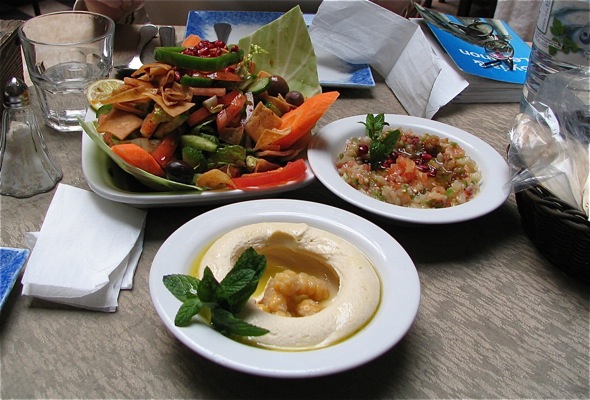
We were surprised to find in many restaurants loads of young girls, nearly all of them puffing on Nargilehs (known as sheeshas in Egypt and Hubbly Bubblys in English).
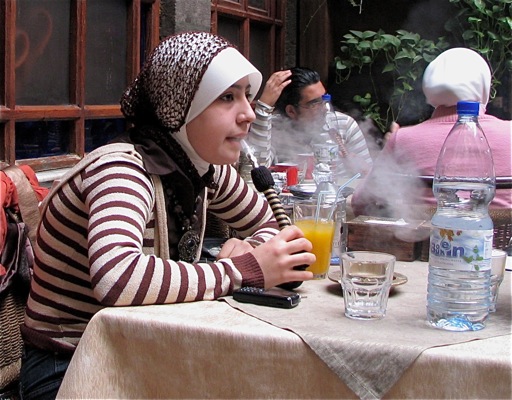
More photos of our trip here

